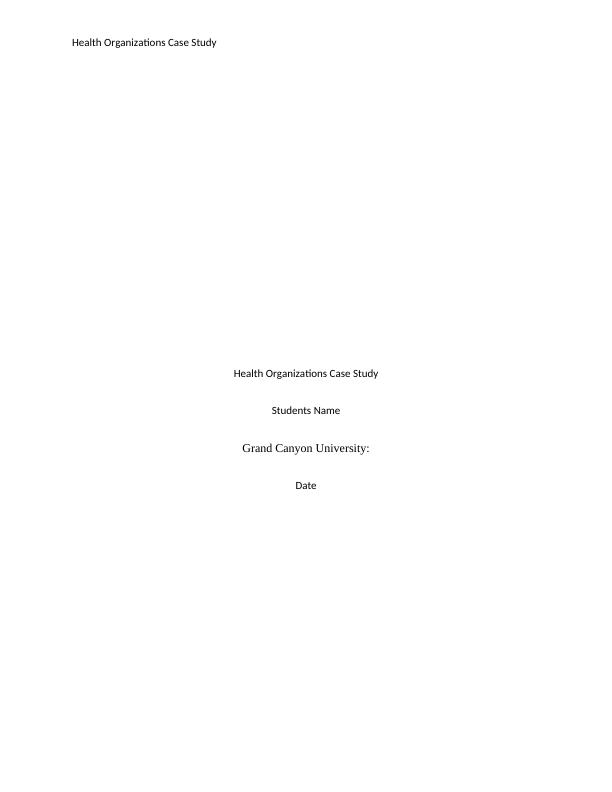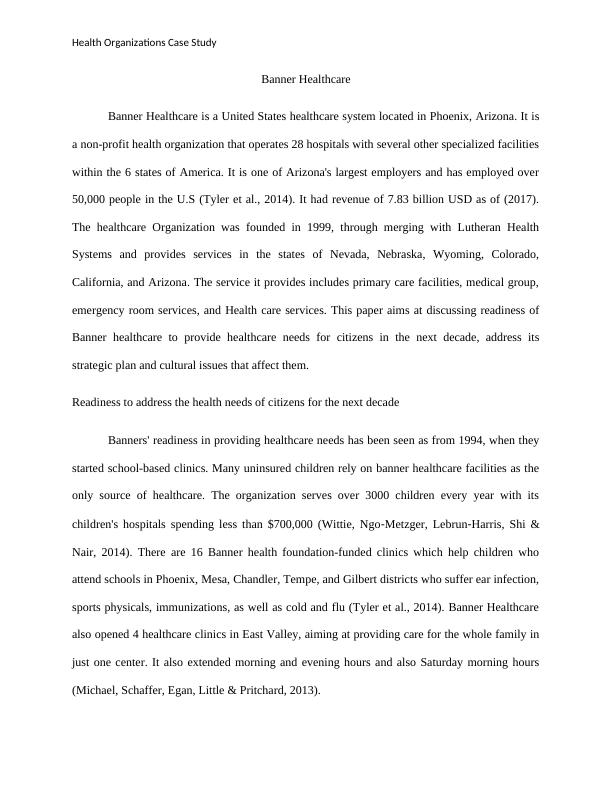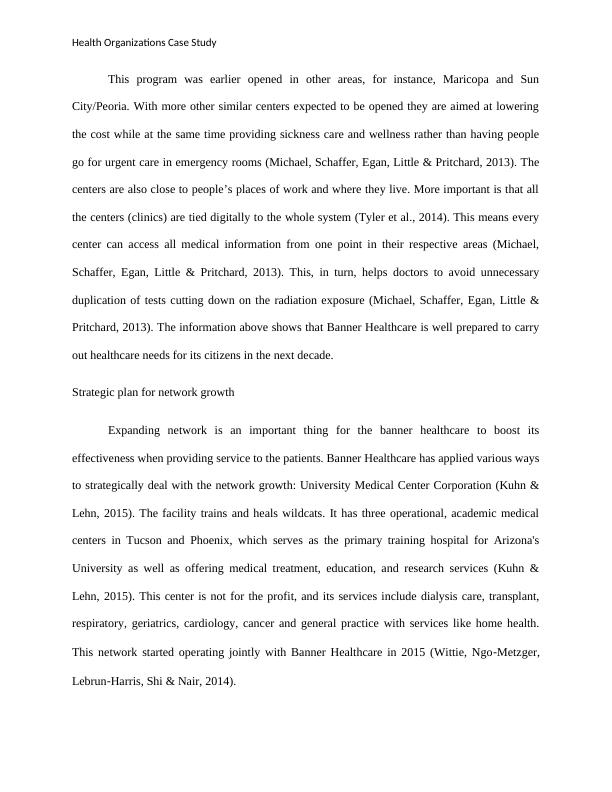Health Organizations Case Study
Evaluation of Singapore Airlines' workforce management program and its impact on the company's success in the service industry.
9 Pages2175 Words338 Views
Added on 2023-06-03
About This Document
This case study discusses Banner Healthcare's readiness to provide healthcare needs for citizens in the next decade, strategic plan for network growth, nurse staffing, resource management, patient satisfaction, and cultural issues that influence strategies.
Health Organizations Case Study
Evaluation of Singapore Airlines' workforce management program and its impact on the company's success in the service industry.
Added on 2023-06-03
ShareRelated Documents
End of preview
Want to access all the pages? Upload your documents or become a member.
Readiness of Banner Health to Meet Future Needs
|8
|1709
|170
Banner Healthcare: Readiness and Strategic Plan
|7
|1719
|323
Health Organization Evaluation - Assignment
|7
|1511
|80
Health Care Organizational Planning for Banner Healthcare and Texas Medical Center
|16
|1284
|315
Banner Healthcare Institution in the USA: A Case Study
|8
|1863
|366
Healthcare Reform Bill USA Assignment
|4
|550
|341



